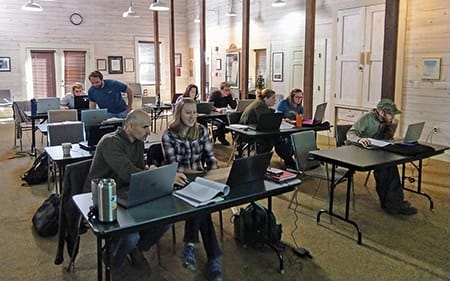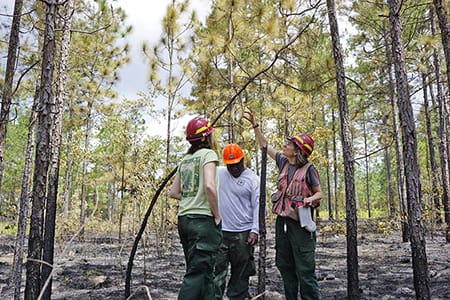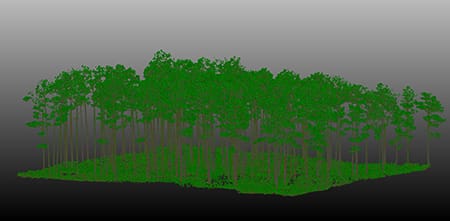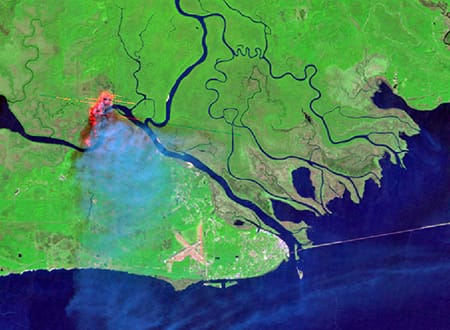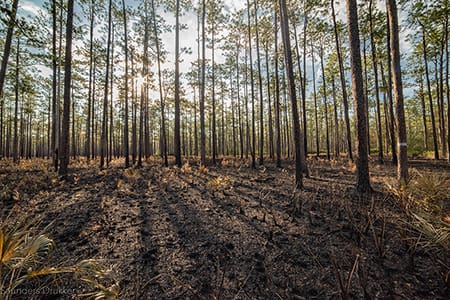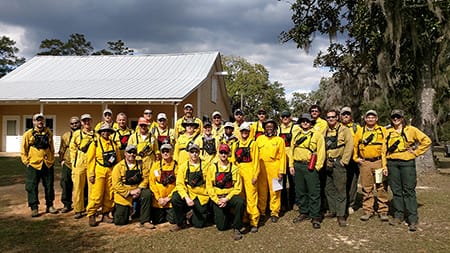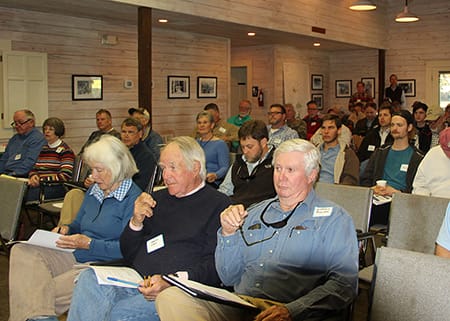eNews
Fall 2018 | Vol 11 | No 4
Hurricane Michael Severely Damages Forest Lands in the Region
Hurricane Michael made landfall at 12:30 PM, Wednesday, October 10, near Mexico Beach, Florida with sustained winds of 155 mph. It entered Georgia as a Category 4 storm, and quickly headed to the northeast causing catastrophic damage to timber stands as far north as Albany, Georgia. Tall Timbers sustained modest timber damage, and has had a salvage crew for the past 6 weeks to capture some saw timber value before fungus infects the wood and reduces its marketability. Dixie Plantation, 30 miles to the east, sustained almost no timber loss. Generally speaking, the Red Hills region was spared significant damage.

Although the Red Hills took a glancing blow, property owners to the west and north were not as fortunate. The Florida Forest Service estimates over 2.8 million acres were impacted in Florida with damages in excess of $1.3 billion dollars to forest resources. In Georgia, damage estimates are around $750 million to forest resources. Bobwhite plantations in the Albany, Georgia, area sustained substantial damage to the timber on their quail managed areas, timber stands, and agricultural areas. Cotton crops were decimated as were pecan groves. Salvage operations are underway, and a few properties with the greatest damage have cancelled their quail season due to difficulties getting around the area, and the extensive cleanup needed. Others have postponed or significantly reduced the amount of hunting scheduled. In addition to loss of upland pine stands, bottomland hardwood forests were completely toppled in the path of the hurricane. Salvage operations are underway in some of these areas as well but have become challenging due to recent heavy rains.
The trick is to capture as much of the salvage revenue as possible and get the woods cleaned up without negative impacts on the quail population itself. Impacts on hunting are unavoidable—the ease of access and scenic nature of these properties will not be the same for the foreseeable future. Many properties are leaving much of the non-merchantable cleanup to spring, to not effect overwinter survival any more than necessary. Brush piles and tree tops also make good cover for birds, even though they are unsightly and awkward to hunt around. It could be years on some of the larger properties before things are completely back to normal. We will be monitoring all this closely with radio-tagged birds going forward.
Estimates of tons of fuels show a 10-fold increase in areas with severe damage, but even areas with modest damage will have significantly more fuels on the ground during burning season and appropriate preparation is needed. Significant fuel build-up, from blow downs and additional needle drop, will change fire behavior and result in much greater flame length and intensity than normal. We anticipate greater scrutiny from agencies permitting burning in areas hit by the storm, and there is the potential for burning bans in the hardest hit areas. That said, where fire can be safely applied, it is important to begin to reduce fuels, and this winter is a good time to begin. While this storm was exceptional in many ways, fire managers in the path of Hurricanes Hugo and Katrina have a number of lessons learned. With residual smoke from smoldering fire cited as a long-term problem that lasted more than 10 years, managers in South Carolina and Mississippi emphasized the need to resume burning as soon as possible to begin the restoration process, and prevent timber stands from seeding into dense loblolly or shortleaf regeneration.
The Georgia legislature has passed legislation to provide funding for clean-up and reforestation. Check with your local Florida Forest Service or Georgia Forestry Commission office for details. If there is any way Tall Timbers can be of help, don’t hesitate to contact us as well.

